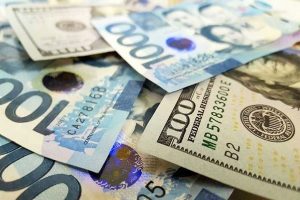Business
Peso Weakness Persists – Analysts

The PESO could continue to depreciate this year due to broad dollar strength, but the Philippine central bank may not need to intervene yet, analysts said.
“The recent depreciation of the peso is concerning, but it is part of a larger global trend,” Security Bank Corp. Chief Economist Robert Dan J. Roces said. in a Viber message.
Bangko Sentral ng Pilipinas (BSP) Governor Eli M. Remolona, Jr. said Thursday that the local currency’s recent performance is due to the strength of the US dollar rather than the weakness of the peso.
He cited escalating tensions from the Middle East that led to a “safe haven.” Flows in the US dollar at the expense of most other currencies.”
The local unit closed at P57.71 against the dollar on Friday, strengthening by seven centavos from P57.78 on Thursday. Thursday’s close was the weakest finish in more than 17 months or since the close of P58.19 on November 10, 2022.
So far, the local unit has depreciated by P2.34 from P55.37 Fend on December 29, 2023.
“We predicted last year that the peso-dollar exchange rate would reach P58 by 2024,” Professor Jesus Felipe of the De La Salle University School of Economics said in an email.
Mr. Felipe said the peso is likely to remain in the P57 to P58 range this year.
The latest assumptions from the Development Budget Coordination Committee show that the peso could range from P55 to P57 in 2024.
The exchange rate is also direct aFStruck by the current account balance, the ratio of Philippine export prices to global import prices and the current policy rate, Mr. Felipe said.
Ateneo de Manila economics professor Leonardo A. Lanzona said the recent strength of the U.S. dollar is also due to the strong performance of the U.S. economy.
“Unless the Philippine economy keeps pace with U.S. economic growth, the value of the peso will continue to decline. This is not necessarily bad for the economy as it encourages greater exports,” he said in an email.
INTERVENTION?
Mr Remolona has said the central bank “stands ready” to defend the currency if necessary, after the peso closed at its weakest level against the dollar in almost 17 months on Thursday.
“Nevertheless, the BSP continues to monitor the market and stands ready to control unnecessary movements and excessive volatility,” he said on Thursday evening.
In October 2022, the peso reached a low of P59 against the dollar. This increased inflationary pressures and prompted the BSP to intervene in the foreign exchange (forex) market and raise interest rates.
Mr Remolona also said the BSP will allow adjustments unless currency movements are “very sharp”.
Enrico P. Villanueva, associate professor at the Department of Economics of the University of the Philippines Los Baños, said the BSP is right to allow currency adjustments.
“It is the mandate of the BSP to ensure financial stability, but not to dictate or control the level of the exchange rate of the peso against the dollar,” he said via Facebook Messenger.
Mr Felipe also noted that the BSP is unlikely to intervene. “Not at this level and as long as the movements are very smooth,” he added.
The BSP would intervene if necessary to maintain stability, Mr Roces said.
“While these interventions remain vague, based on recent Gross International Reserves (GIR), we have sufficient external coverage for this,” he said.
“As such, the recent moves are market-driven and there is no inherent weakness in the peso. The main catalyst was the US Fed’s signal on the need to keep rates high for longer, and likely a knee-jerk regional reaction after the surprise rate hike in Indonesia,” he added.
Policymakers at the US Federal Reserve have indicated they are not in a rush to cut rates anytime soon due to persistent yieldsFlat.
The Fed will hold its next meeting this week (April 30-May 1).
Mr. Remolona previously said the peso’s recent decline is due to signals of delays in Fed policy easing. He also said the peso’s weakness is unlikely to affect the BSP’s monetary decisions.
Treasury Secretary Ralph G. Recto also said last week that the depreciation of the peso is not enough reason to raise interest rates.
From May 2022 to October, the Monetary Board raised borrowing costs by 450 basis points to bring the benchmark interest rate to a near 17-year high of 6.5%. At the April meeting, the BSP was ready for a fourth meeting in a row.
The Monetary Board will hold its next policy meeting on May 16. — Luisa Maria Jacinta C. Jocson









